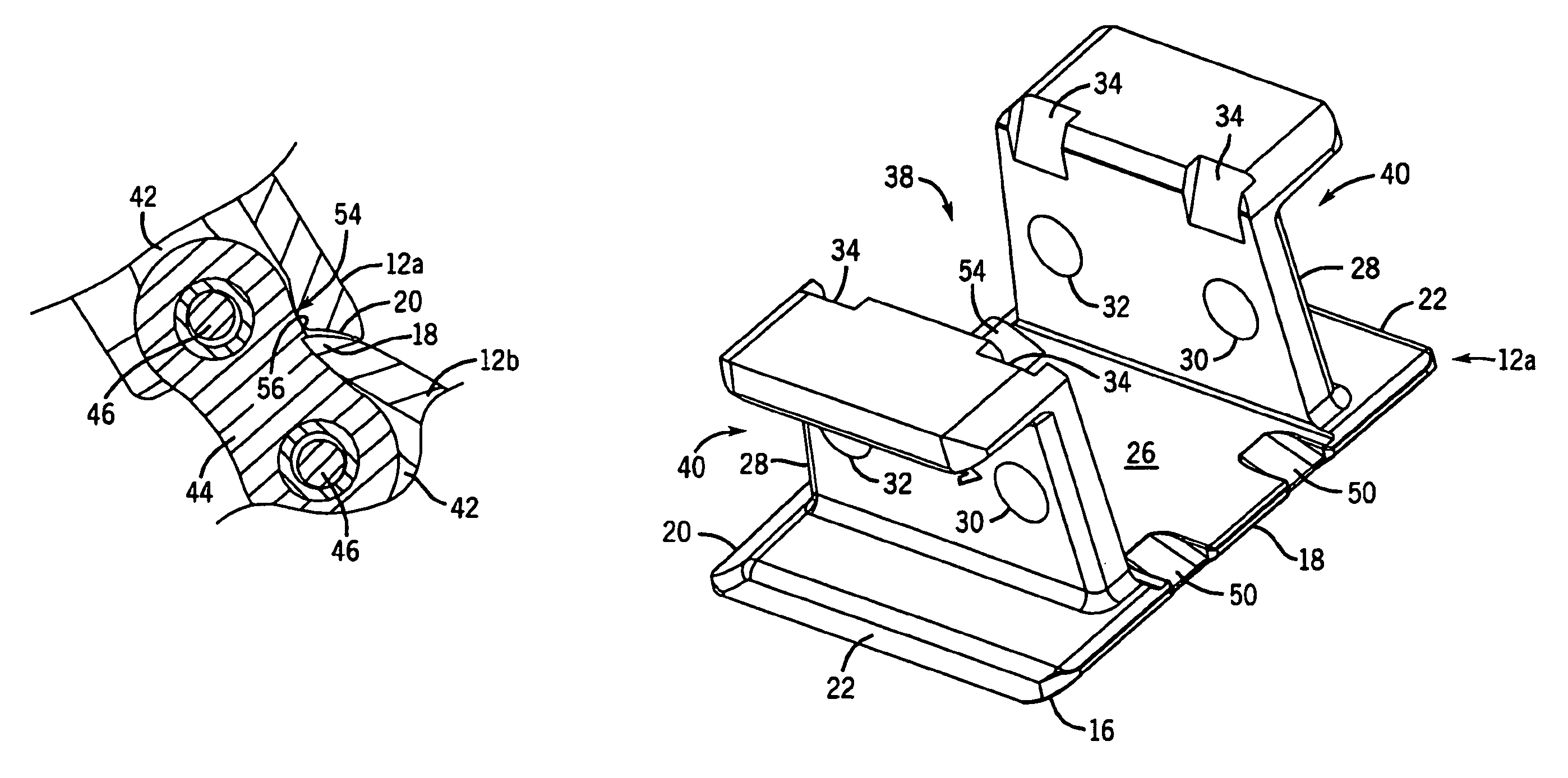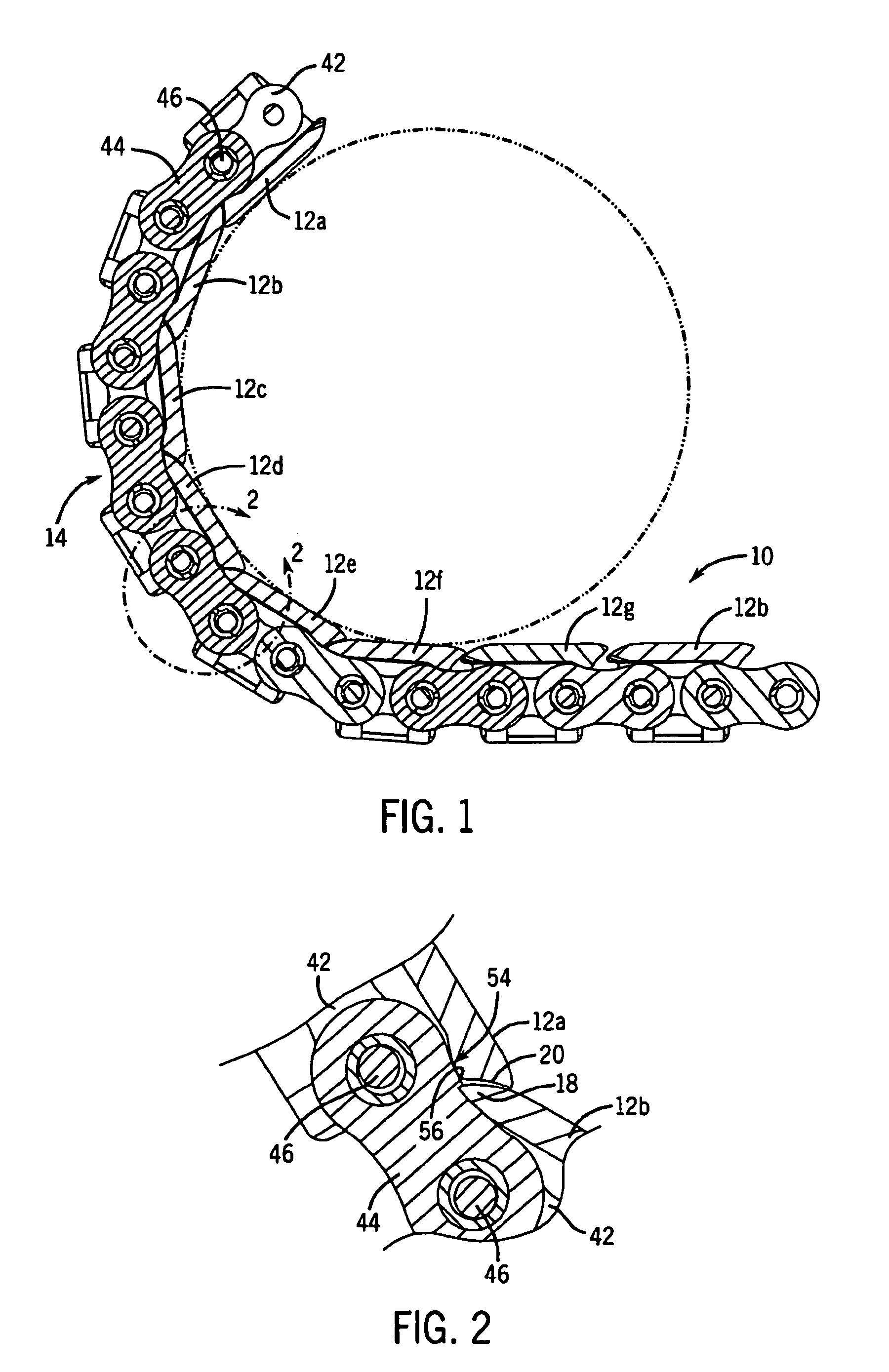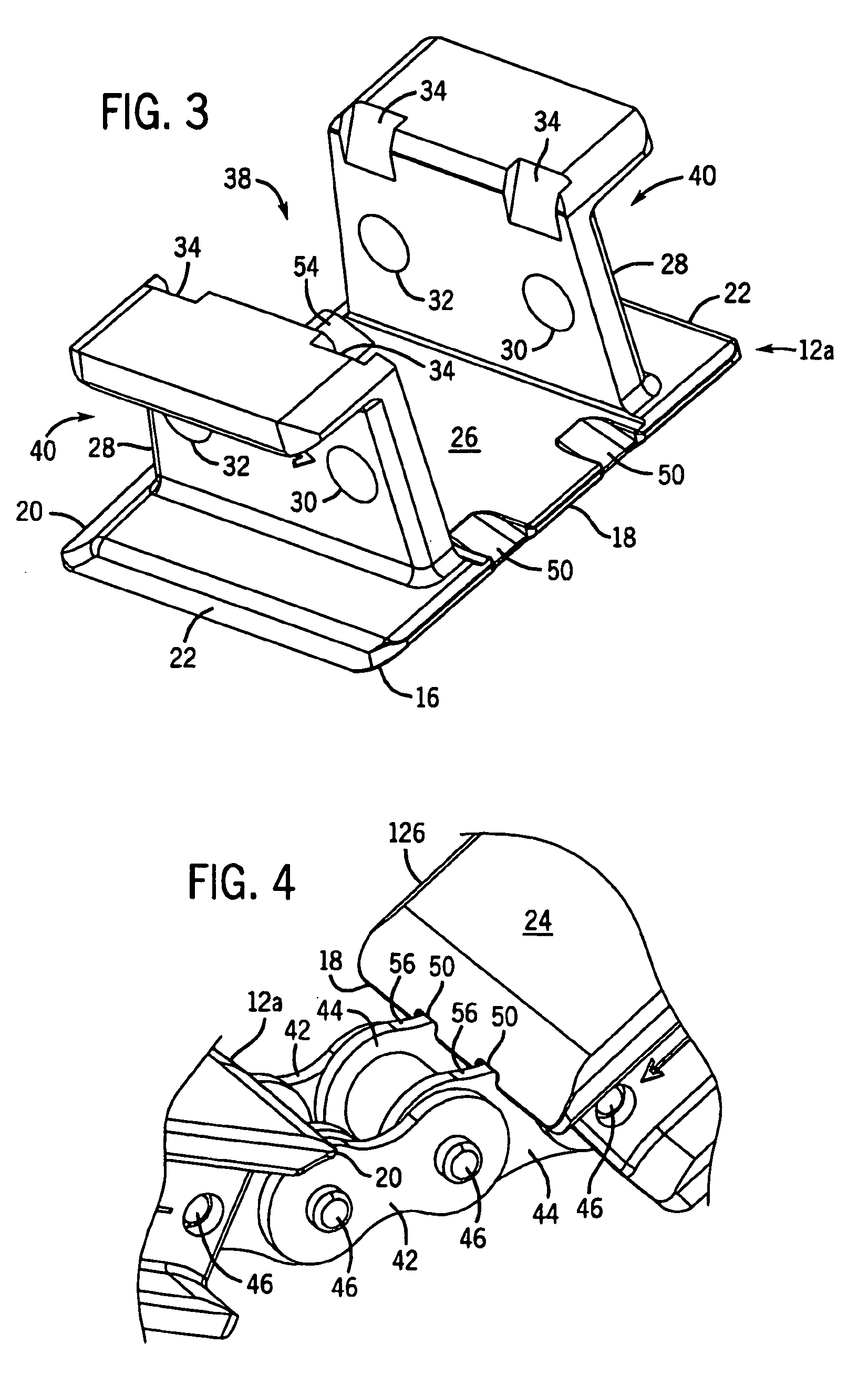Anti-shingling product conveying chain
a technology of conveying chain and product, which is applied in the direction of conveyors, transportation and packaging, etc., can solve the problems of shingling and damage to the top plate or chain, and achieve the effect of increasing the backward flexure of the conveying chain
- Summary
- Abstract
- Description
- Claims
- Application Information
AI Technical Summary
Benefits of technology
Problems solved by technology
Method used
Image
Examples
Embodiment Construction
[0016]A product conveying chain 10, shown in FIGS. 1–6, includes a plurality of top plates 12a–h fixed to a base chain 14. The top plates 12a–h include notches 50 formed in their leading edges 18 that allow increased backflexing, and bumps 54 formed proximal their trailing edges 20 restrict articulation of the conveying chain 10 to prevent shingling. The combination of bumps 54 and notches 50 on each top plate 12a–h provides a conveying chain 10 that resists shingling while maintaining an acceptable degree of backflexing.
[0017]The base chain 14 includes pairs of outer sidebars 42 and pairs of inner sidebars 44 connected together by a plurality of chain pins 46. The inner sidebars 44 of the base chain 14 between adjacent top plates 12a, 12b join the outer sidebars 42 fixed to the preceding (upstream) top plate 12a and the outer sidebars 42 fixed to the following (downstream) top plate 12b. As a result, the inner sidebars 44 are the following inner sidebars 44 for the upstream top pla...
PUM
 Login to View More
Login to View More Abstract
Description
Claims
Application Information
 Login to View More
Login to View More - R&D
- Intellectual Property
- Life Sciences
- Materials
- Tech Scout
- Unparalleled Data Quality
- Higher Quality Content
- 60% Fewer Hallucinations
Browse by: Latest US Patents, China's latest patents, Technical Efficacy Thesaurus, Application Domain, Technology Topic, Popular Technical Reports.
© 2025 PatSnap. All rights reserved.Legal|Privacy policy|Modern Slavery Act Transparency Statement|Sitemap|About US| Contact US: help@patsnap.com



